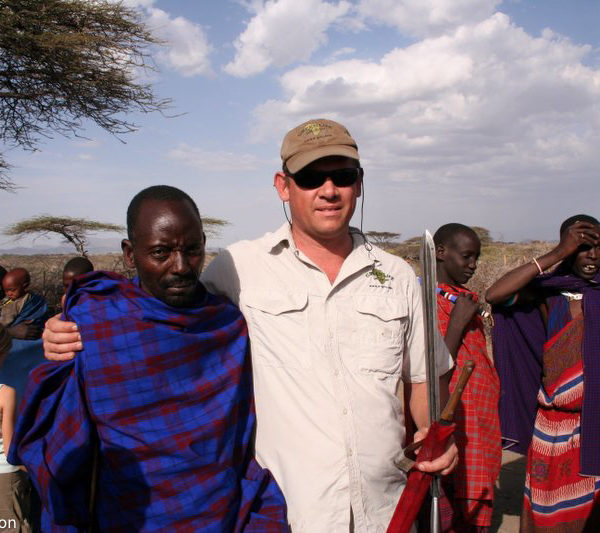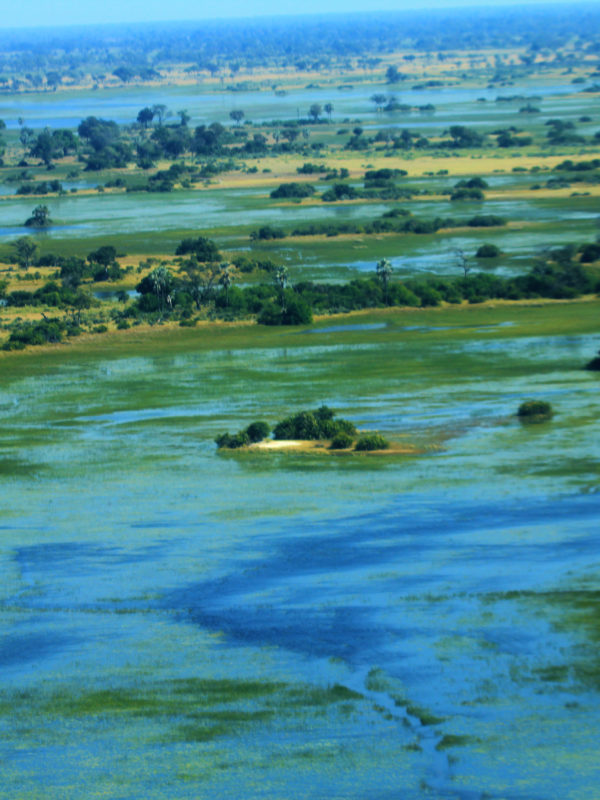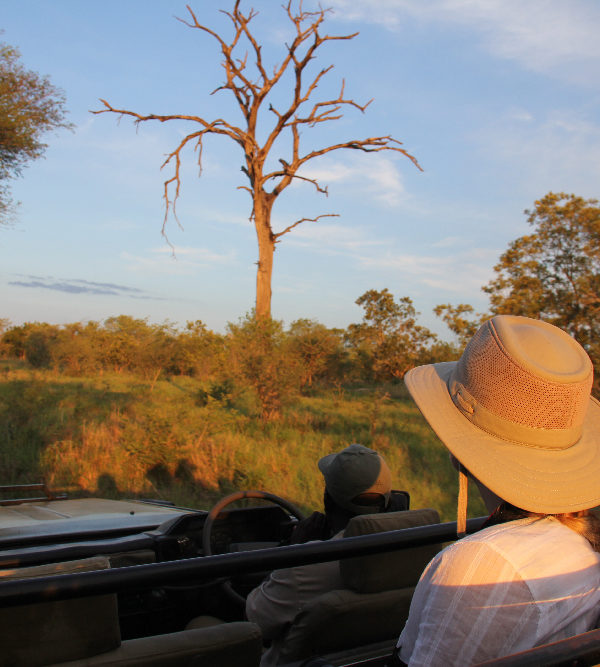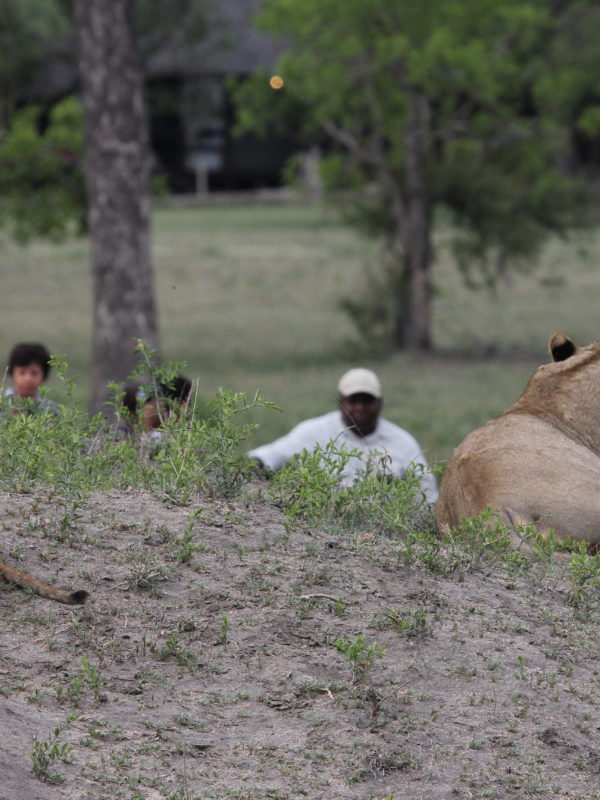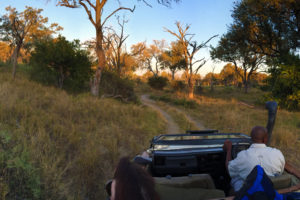The animals were pushed further and further into the inhospitable western reaches on the Botswana border, to an area set aside for hunting and farming.
Through a twist of fate, the land gained National Park status and Hwange National Park became is the largest game reserve in Zimbabwe, noted for its massive population of elephants.
It is a place of great contrasts between wet and dry season, with the extremes reminding you of the life-giving properties of water. During the desperately dry months the park can appear very inhospitable to such a large number of animals. The salt-pans are crusted and cracked, the acacia scrub is wilting and the grassy plains are yellow and crunchy. However the animals survive on limited vegetation and the help of man-made waterholes that sustain them until the rains bring forth new growth.
Lion spoor
ANIMALS AND BIRDS
Hwange has Africa’s Big Five and plenty of them! There are thousands of elephants and buffalo. Lions are commonly seen, but the elusive leopard and rhino are always a bonus to see. This park has such variety that one hundred different species have been recorded.
Dry season game-viewing is assisted by the shallow pans threaded throughout the park. The natural salt-licks provide elephants with favourite mud holes for wallowing and sixty man-made waterholes give much needed water during the hot parched winter months when everything else dries up. Several waterholes have raised wooden hides in which you can spend many hours observing animals and the interactions between them.
400 species of birds are found here making it a bird watchers paradise, particularly in the wet season.
The largest is the ground dwelling Kori Bustard who will only take to the air if absolutely necessary. Abundant food marks the start of the mating season and crowned cranes prance in a comical dance and red bishops sport their startling scarlet breeding plumage. There are plenty more with long wispy tails, iridescent colours and loud squawking calls.
Several of Hwange’s safari lodges occupy a private concession and unlike the public park, night drives are allowed. One memorable after-dark sight is the Springhare, who hops around like a miniature kangaroo.
SEASONS
Dry Season: July to September is hot during the day but can drop to below freezing on particularly cold winter nights. During these dry months the animals are concentrated around the man-made waterholes, without which they would die.
Rainy Season: Big fluffy clouds release the summer rains and the vegetation bursts into life. The area has a relatively low average rainfall of between 22½-25½ inches (570-650 mm) per annum. Temperatures can reach over 100°F (38°C), while on average they range from 65-83°F (18-28°C). Birdlife is most spectacular at this time.
HWANGE SPECIALITIES
• Thousands of elephants
• Over 100 different types of animals and 400 species of birds
• Strategically placed viewing hides
• Luxury safari lodges with their own ‘off the beaten track’ traversing areas
• Night drives – from the private lodges
FACTS
The park covers an area of 5,656miles² (14,651km²) with an average altitude 3,300 ft (1,000m) above sea level.
It is situated on the main Bulawayo to Victoria Falls road in the northwest corner of Zimbabwe and borders Botswana.
Hwange has 300miles (480km) of roads, many of which are all weather but some get boggy during the rainy season and are closed. There is no off-road or night driving in the National Park.
This is a malarial area.

